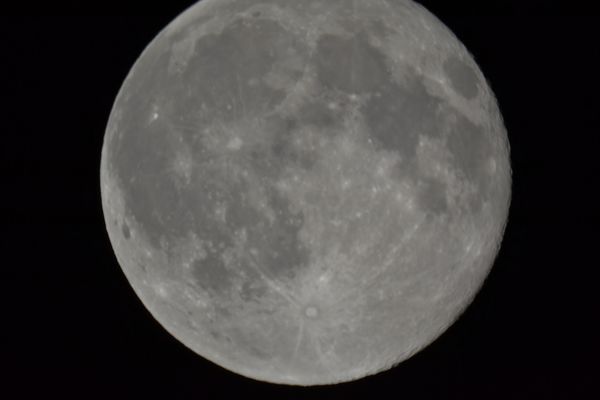Using my telescope as a camera lens
Jan 30, 2018 10:38:29 #
I'm using a Nikon D3100 body attached to a Meade ETX90 telescope. I have not been able to get this combination to capture images that are as sharp as what I see through the eyepiece of the telescope. Any suggestions?
Jan 30, 2018 10:49:30 #
1Feathercrest
Loc: NEPA
axiesdad wrote:
I'm using a Nikon D3100 body attached to a Meade ETX90 telescope. I have not been able to get this combination to capture images that are as sharp as what I see through the eyepiece of the telescope. Any suggestions?
Back in the late 50's I used to use the lens of my binoculars paired to my Leica M3 and got satisfactory pictures like that. However, I never tried to greatly enlarge them so I would imagine that was not a great way to get close ups.
I now own a Nikon 3100 which is a quite satisfactory camera for entry level photographers (like me, after a great many years). The Leica ( a rangefinder, film camera) was sold to pay for my daughter's entry into the world). I miss it greatly but digital is the way to go, even with low priced cameras like my N 3100.
Jan 30, 2018 11:01:46 #
axiesdad wrote:
I'm using a Nikon D3100 body attached to a Meade ETX90 telescope. I have not been able to get this combination to capture images that are as sharp as what I see through the eyepiece of the telescope. Any suggestions?
Images of what?
How are you attaching D3100 to the telescope?
Jan 30, 2018 11:29:09 #
axiesdad wrote:
I'm using a Nikon D3100 body attached to a Meade ETX90 telescope. I have not been able to get this combination to capture images that are as sharp as what I see through the eyepiece of the telescope. Any suggestions?
You may do better asking this in the Astronomy section. http://www.uglyhedgehog.com/s-109-1.html
Jan 30, 2018 11:45:53 #
rehess wrote:
Images of what?
How are you attaching D3100 to the telescope?
How are you attaching D3100 to the telescope?
I'm using the adapter made by Meade specifically to mate Nikon cameras to the scope. This (attached) is the best I have managed, not awful, but not as tack sharp as I would like.
Jan 30, 2018 12:36:54 #
I have the identical system and that's about what I get. I have trouble getting the set screw tight enough to prevent tilt, so many of my captures are blurred at the top. Looking for a thumb screw just for this adapter.
Jan 30, 2018 13:01:19 #
Single images taken through the telescope of the moon or the planets with any type of camera setup will never be as sharp as what you see in the eyepiece. There are several ways around this. For the moon, if you use a higher power then merge multiple close up images into a single large image you will get a sharper composite image. For the planets (although this may work for the moon also) on telescopes with a tracking motor, people shoot video (anywhere from 600 to 1000 frames, so 20 to 30 seconds at 30 fps) and use a program like RegiStax to stack the images into a single picture. This will bring out details that are generally not seen with the eye, but are captured by the camera sensor.
Jan 30, 2018 17:30:43 #
Bobspez wrote:
Single images taken through the telescope of the m... (show quote)
What sage and articulate a response. Thank you for sharing your knowledge.
Jan 30, 2018 18:40:40 #
axiesdad wrote:
I'm using a Nikon D3100 body attached to a Meade ETX90 telescope. I have not been able to get this combination to capture images that are as sharp as what I see through the eyepiece of the telescope. Any suggestions?
On my reflector. I should have used an ND, and a pair of pliers.
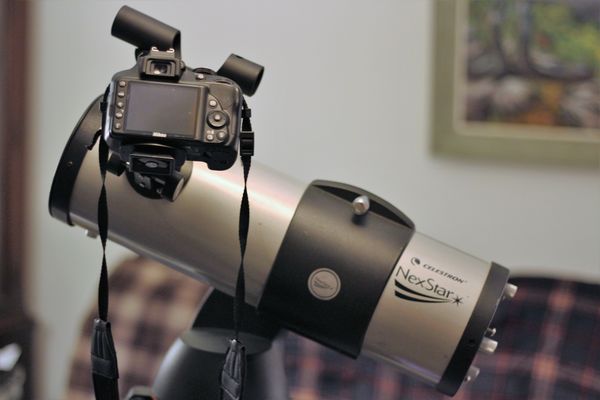
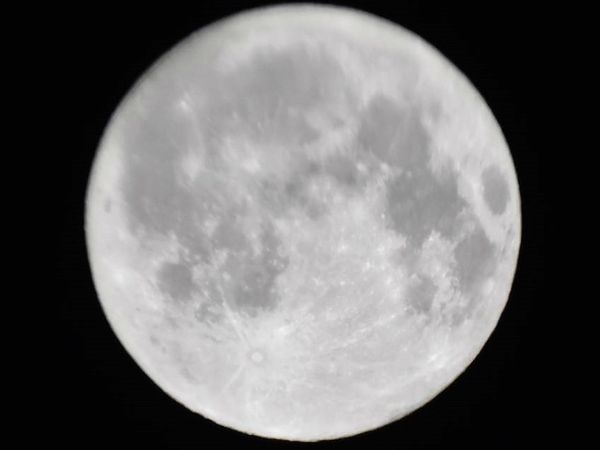
Jan 30, 2018 20:25:53 #
You're welcome.
broncomaniac wrote:
What sage and articulate a response. Thank you for sharing your knowledge.
Jan 30, 2018 21:37:29 #
axiesdad wrote:
I'm using a Nikon D3100 body attached to a Meade ETX90 telescope. I have not been able to get this combination to capture images that are as sharp as what I see through the eyepiece of the telescope. Any suggestions?
Did you adjust brightness/contrast in PP?
It kind of 'feels' like an image that has been clipped by Dynamic Range issues.
Jan 30, 2018 21:49:14 #
axiesdad wrote:
I'm using a Nikon D3100 body attached to a Meade ETX90 telescope. I have not been able to get this combination to capture images that are as sharp as what I see through the eyepiece of the telescope. Any suggestions?
Are you doing this as prime focus where the camera attaches to the scope without a lens and without an eyepiece? This is absolutely the best way to do this and produces very sharp results. But not all scopes provide sufficient back focus that the camera can achieve infinity focus (meaning that the camera can't get close enough).
Attached is an example using an Orion 8" Astrograph Newton type reflector with a Sony A57 APS-C type sensor of a shed at a distance of about one mile just to show a terrestrial shot of how sharp it can be. This camera, also known as a crop sensor, is going to take the 800mm focal length of the scope and give it an equivalent field of view of 1200mm.
The 2nd image is using a Canon SX50 with it zoomed out all the way which is rated as 1200mm for comparison.
The 3rd image used a Tamron 150-600mm at 600mm with the Sony A57 for a FOV equivalent to 900mm focal length.
I think you can see from this that the scope did quite well.
Orion 8" Astrograph with Sony A57
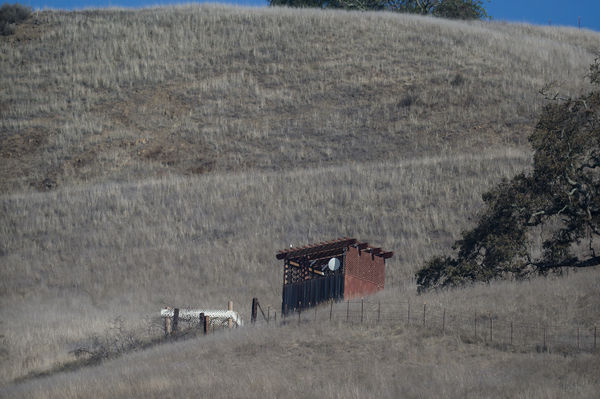
(Download)
Canon SX50 at full zoom for comarison
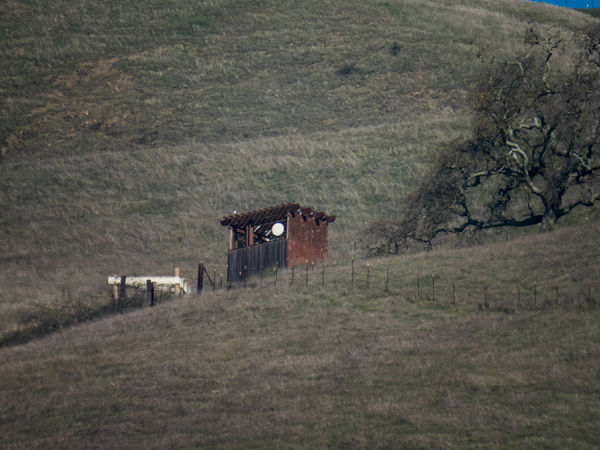
(Download)
Tamron 150-600 at 600mm using Sony A57
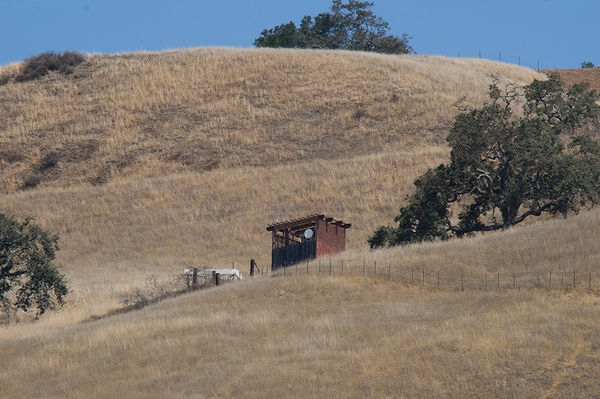
(Download)
Jan 31, 2018 00:45:19 #
JimH123 wrote:
Are you doing this as prime focus where the camera... (show quote)
Awesome demonstration. Thank you. I'm sure OP will thank you as well.
Jan 31, 2018 06:44:12 #
danlsmith
Loc: Columbus Ohio
If you enjoy taking pictures of the moon and other dark sky items, try this. Use a good firm tripod. Take 10 or more pictures without moving the camera. Then add them together, "stack" them. This greatly increases the sharpness, contrast, and makes the equivalent ISO lower. Stack two pictures taken at ISO 100 and the output image looks like ISO 50. Stack 10 pictures taken at ISO 100 and the output looks like ISO 5!!!. I use a free program called Registax. I have version 6. It is designed for astronomical pictures but also works with any other type of photography, even portraits. Others use different software, I happened to have found Registax, it is a Windows program, it is free, and it does an excellent job. Google for it. ☺
Jan 31, 2018 09:15:27 #
Thank you all for the advice. I will check out Registax. Hoggers are the best!
If you want to reply, then register here. Registration is free and your account is created instantly, so you can post right away.



